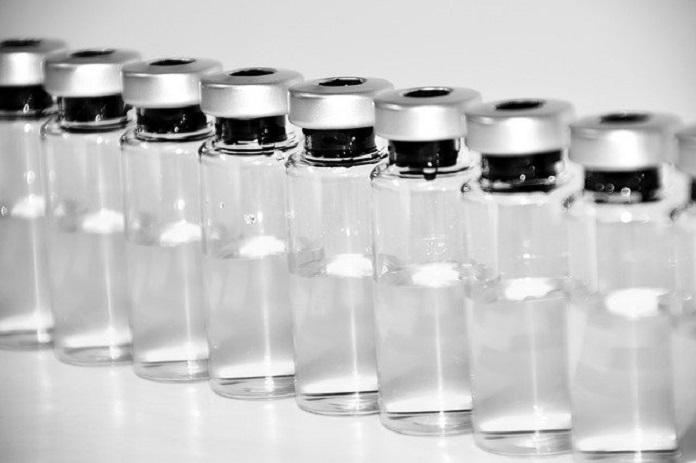Researchers use computer analysis of the latest coronavirus sequences and find targets that may help develop a successful SARS-CoV-2 vaccine.
Are we close to developing a vaccine to protect the general population from the latest coronavirus infection that we hear about every day in the news? Researchers in Hong Kong believe that they have taken a giant step forward in this fight to create a SARS-CoV-2 vaccine that could protect a large percentage of the population.
SARS, or severe acute respiratory syndrome, was first talked about in 2003 when the virus was detected in the Yunnan province of China. It was caused by a virus from the coronavirus family. This is a zoonotic virus, meaning that it originally infected other animal species before it jumped to infecting humans. The original virus for the 2003 SARS outbreak was traced back to cave-dwelling bats.
Often, a zoonotic virus will transmit from animals to humans, but once humans are infected, they will not pass this virus on to other humans. The danger comes when the virus mutates (changes its genetic material) into a form that can then pass on from human to human. This was the case for the 2003 infections of the SARS coronavirus and is also the case for the new COVID-19 infection of the SARS coronavirus 2 (SARS-CoV-2), which is why it has spread so quickly worldwide.
The infection has symptoms very similar to those of influenza, which include a high fever, aches, a sore throat, fatigue, and coughing. The average time it takes from initial infection to showing the first symptoms is normally 4 to 6 days, though it can take up to 14 days, which is why the quarantines enforced by different countries trying to fight this virus generally last 14 days.
While the symptoms may seem flu-like, there is a larger risk of developing pneumonia, a severe infection of the lungs, either from the virus attacking lung cells or by bacteria infecting the lungs. It is this pneumonia that causes shortness of breath and higher risks of dying from the coronavirus infection.
Right now, the only effective way to fight the coronavirus infection is to identify those who are infected, isolate them from the population, and to attempt to isolate as many people as possible that have come in contact with them. This method is only partially successful, and a vaccine could greatly reduce the spread of the disease.
Researchers in Honk Kong took a large step forward in this fight by identifying specific targets on the SARS-CoV-2 virus that could be used as a potential vaccine. Their estimation is that their discoveries could protect as much as 96% of the global population from the virus.
To do this, the researchers looked up the genetic sequences of the 2003 coronavirus and the recently studied 2019 coronavirus. They also used previous studies from the 2003 SARS outbreak that had looked at individual people’s immunities against that virus.
The human body fights infections by identifying invading material and then attacking and destroying it. This is done through the immune system, where specialized cells (B and T cells) generate antibodies that stick to parts of the invading germs and tag them for destruction. The problem with immunity is that it takes time for our bodies to develop these antibodies, and during that time the germs have free reign to infect and hurt our bodies.
Vaccines work by ‘tricking’ the body into thinking that it is being infected. By injecting weak or dead germs — or chopped up parts of the germs — into the body, our immune system has time to build an immune response. What is really wonderful about this response is that the immune system keeps a bank of cells that attack these germs, which acts as a memory of the infection. That’s why we often don’t get infected a second time by the same germ. If the same germ enters our bodies again, the immune system can quickly mount an attack and kill off the germ before it has time to make us sick.
By studying the antibodies of people who were infected with the 2003 SARS virus, and comparing the parts of the virus that were attacked with the 2019 SARS-CoV-2 virus, the researchers found some sections that were identical between both viruses. This means that these parts of the coronavirus could be put in a vaccine, and would most likely generate an immune response that would slow down the SARS-CoV-2 infections worldwide.
Unfortunately, people with different ethnic backgrounds have genetic differences that affect their ability to fight specific parts of viruses. The same genetic mix that would make a SARS-CoV-2 vaccine with a worldwide efficiency of over 96% would only be 88% effective in the population in China. However, this is still a relatively high percentage of success for increasing a population’s immunity.
These results are very promising, and the researchers suggest further research into the immunity of people infected by the SARS-CoV-2 virus that could allow them to develop a more effective SARS-CoV-2 vaccine.
Written by Nancy Lemieux
References:
1. HKUST scientists shed light on COVID-19 vaccine development. (2020). Retrieved 26 February 2020, from https://www.eurekalert.org/pub_releases/2020-02/hkuo-hss022520.php
2. Ahmed, S., Quadeer, A., & McKay, M. (2020). Preliminary Identification of Potential Vaccine Targets for the COVID-19 Coronavirus (SARS-CoV-2) Based on SARS-CoV Immunological Studies. Viruses,12(3), 254. doi: 10.3390/v12030254
3. Nucleocapsid. (2020). Retrieved 26 February 2020, from https://www.sinobiological.com/nucleocapsid-a-6107.html
4. Severe acute respiratory syndrome. (2020). Retrieved 26 February 2020, from https://en.wikipedia.org/wiki/Severe_acute_respiratory_syndrome
Image by Ulrike Leone from Pixabay



